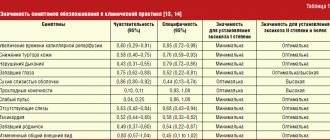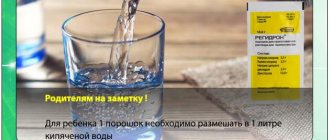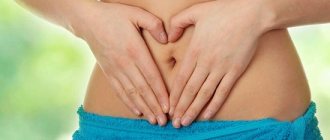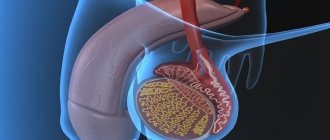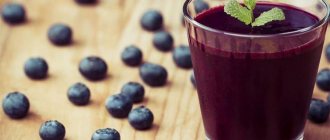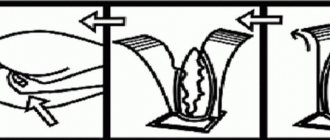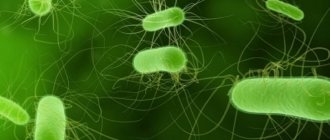Every person has experienced an intestinal disorder. It is not always possible to immediately use effective medications to cope with the situation. Some people do not want to use chemical tablets to eliminate the symptom. When is saline solution used for diarrhea? How to cook it? What effect does the product have on the body?
Impact of composition
Although using a water-salt solution against diarrhea will have some effect, it is important to understand how the remedy works.
With the help of salt water, you can stop diarrhea and replenish the water-salt balance. However, this method cannot cope with the root cause of intestinal disorder. Salt and water do not treat diarrhea and do not destroy infections that cause pathological processes.
The main effects of salt with water for diarrhea can be reduced to several aspects:
- fluid retention in the body;
- prevention of putrefactive processes in the intestines;
- normalization of food digestion processes;
- relief of inflammation in the intestines;
- destruction of microbes;
- neutralization of toxins.
During an intestinal disorder, the body loses a lot of fluid and salts. The person experiences severe fatigue, weakness and drowsiness. Failure to provide treatment for acute diarrhea can be fatal.
A saline solution is something that a person can prepare for himself to relieve his condition anywhere, wherever he is.
Pharmacy analogues
Pharmacy analogues of saline solution will help to quickly restore the balance of fluid in the body at home:
- Asparkam. Designed to normalize electrolyte balance and magnesium and potassium deficiency. It can only be taken on the recommendation of a doctor, as it has a number of side effects and contraindications.
- Glucosan. This solution eliminates and prevents dehydration. With its help, they fight the main symptoms of infectious diseases; it is also used to prevent fluid deficiency during intense physical activity, changes in climatic conditions or diseases.
- Gastrolit. This drug has a wide range of actions: relieves intestinal spasms and inflammation, kills harmful bacteria, replenishes the balance of minerals and trace elements. There are practically no side effects, so it is used to treat children, pregnant and lactating women, adolescents and adults.
- Regidron. Medicine recommended by WHO for diarrhea. It has a mild effect, improving the condition of prolonged vomiting and diarrhea. Its distinctive feature is a moderate concentration of sodium in the composition and a high concentration of potassium. Due to this, the drug does not cause side effects or allergic reactions.
In medical institutions, under the supervision of hospital staff, droppers are made with the following solutions:
- Trisol. This drug improves blood circulation and removes toxins, stops oxidative processes in the body and relieves stress on the kidneys and heart. Trisol is used for severe dehydration and poisoning.
- Linger-Locker solution. Often used to treat the underlying symptoms and side effects of dehydration.
- Sodium chloride. The most popular solution for droppers. In a short period of time it eliminates the symptoms of nausea and vomiting. The need to monitor the dosage and frequency by a doctor is due to possible side effects.
- Lactasol. A drug that compensates for water and electrolyte balance, improves heart function and blood circulation, and removes toxins.
When taking pharmaceutical saline solutions at home, you must carefully follow the instructions, do not exceed the dosage, and in case of overdose, immediately seek emergency medical help.
When the method is contraindicated
Although saline solution is a very simple method, there are some diseases for which the use of salt is contraindicated. This composition cannot be used for the following diagnoses:
- allergic reaction to sodium chloride;
- diabetes;
- for severe diseases of the gastrointestinal tract;
- for kidney diseases.
We recommend: Using oak bark for diarrhea - decoction and infusion recipes
It is prohibited to use saline solution to stop diarrhea in children under 3 years of age. Women expecting the birth of a child should use this method with caution. It is important to take into account these contraindications, then the body will not be damaged.
How does the water-salt solution work?
A water-salt solution for diarrhea is not a panacea, but a good auxiliary, safe, proven folk remedy that can be taken even by children. It is used when it is not possible to immediately take medications, or in cases where a person prefers traditional medicine recipes. You should know that this liquid cannot eliminate the cause of diarrhea or cure the disease that accompanies it. The action of the product is as follows:
- prevents dehydration due to its ability to retain fluid;
- neutralizes and reduces the concentration of toxins;
- prevents the onset of putrefactive processes in the digestive system;
- acts as an antiseptic.
If you have diarrhea, prepare a saline solution and take it - this is the first thing that is easy to do in any conditions. But there are several contraindications for its use. It is not recommended to take saline liquid:
- children under 3 years old;
- patients with diabetes mellitus;
- with caution for pregnant and lactating women;
- in case of manifestations of an allergic reaction to NaCl;
- hypertensive patients with severe forms of the disease;
- for kidney diseases.
We recommend: Why does diarrhea occur after drinking alcohol and how to treat it?
Saline solution cannot cure infectious or invasive (caused by helminths), as well as other types of diarrhea caused by various reasons - from stress to abdominal infarction. But it can be used effectively to alleviate the patient’s condition and replenish lost fluid. In case of poisoning, this remedy helps reduce the concentration of toxins in the intestines, promotes a more effective action of medications, has an anti-putrefactive effect, and has preservative properties that help stop the infection.
Rules for preparing and taking saline solution for intestinal upset
Depending on age, the frequency of use of the saline solution and the concentration of the prepared composition differ. The table below indicates how often this diarrhea remedy should be used depending on age.
| Patient age | Dosage | Frequency of application |
| Child from 3–7 years old | 50 ml | 1 time every 1.5–2 hours |
| Child from 7–12 years old | 100 ml | 1 time every hour |
| Child over 12 years old and adult | 100–150 ml | 1 time every 40–50 minutes |
After starting treatment, the composition is taken until the frequency of bowel movements decreases and the symptoms of intestinal disorder disappear.
If after 5–7 times of using the salt composition there is no relief, medical attention is required. It is better to go to the hospital or call an ambulance.
To prepare the solution you only need salt and water. The table below describes the salt concentration per 200 ml of the composition depending on age.
| Age | Amount of salt per 200 ml |
| From 3–7 years | 1 teaspoon |
| From 7–15 years | 1.5 teaspoons |
| Over 15 years old | 2 teaspoons |
Before use, it is important to stir the salt well so that no undissolved crystals remain.
What to combine saline solution with
Treatment of a child or adult for diarrhea with salt can last a long time. If the recipe includes other additional components, recovery will come faster.
You can alternate the use of salt solution with the following compositions:
- starch solution;
- decoction of pomegranate peels;
- Activated carbon;
- bird cherry decoction;
- flour solution;
- oak bark decoction.
We recommend: Can adults and children use honey for diarrhea?
Most of these formulations are also suitable for children. You can add soda to some mixtures. You should use only a flour solution with caution, although it helps to consolidate the stool, it can provoke fermentation processes in the intestines, which will only worsen the situation.
We also recommend trying vodka with salt to combat loose stools (adults only!).
Choosing a treatment method depending on the type of diarrhea
If a child or adult develops diarrhea, it is important to understand the type of diarrhea to determine whether saline solution will help. Not all types of intestinal disorders can be treated at home. Let's look at the four most common types of diarrhea, for which the use of this method is either ineffective or contraindicated.
Secretory diarrhea
With secretory diarrhea, the patient develops a number of symptoms - from vomiting and diarrhea with copious fluid excretion to changes in body temperature and severe weakness. The cause of this disorder is usually pathogenic viruses or bacteria.
In this case, make a saline solution and take it is useless. Qualified treatment is required, which can only be prescribed by a doctor. If the symptoms described above develop, you should consult a specialist as soon as possible and begin adequate therapy.
Invasive diarrhea
The causative agents of the disorder in this case may be parasites or worms. Feces contain mucus and blood. Treatment is carried out using special anthelmintic drugs.
In this case, a saline solution is just a preventive measure and a means that can prevent dehydration by restoring the normal water-salt balance in the body.
Osmotic diarrhea
Osmotic diarrhea is characterized by watery stools and the presence of large amounts of mucus. If the problem was caused by the use of laxative solutions, using a water-salt composition is unacceptable. The condition may worsen significantly.
Motor diarrhea
With motor diarrhea, defecation occurs frequently, but a small amount of feces is released each time. This disorder indicates disruptions in the processes of intestinal motility.
We recommend: Is it possible to eat a banana for medicinal purposes for diarrhea?
In this case, a saline solution is prepared in order to prevent the situation from getting worse, but this method does not solve the problem and does not normalize the digestive processes.
Vomiting and diarrhea are most often manifestations of an infectious lesion of the gastrointestinal tract,
therefore, they require mandatory medical intervention.
Only a doctor should treat a child with an acute intestinal infection!!!
Your task is to alleviate the child’s suffering and prevent the development of complications that may threaten his life.
Remember:
- If your child has vomiting and diarrhea, call a doctor immediately
- do not feed the baby until the doctor arrives
- Never give your child antibiotics or other chemotherapeutic drugs (furazolidone, enteroseptol, phthalazole, phthazin, biseptol and their analogues) on your own.
- be sure to leave the baby’s stool (on the diaper, diaper, in the potty) so that the doctor can examine it
What are the dangers of vomiting and diarrhea?
- with frequent loose stools and repeated vomiting, the child loses a large amount of water, and with it mineral salts, which leads to severe disturbances in water-mineral metabolism. This condition is called exicosis or dehydration. Remember - the younger the child, the more sensitive his body is to the loss of water and salts, the more severe his condition
- vomiting may impair the patency of the airways, as stomach contents may get into them, and this is a situation that directly threatens the child’s life
What are the first signs that indicate the development of dehydration?
- the child becomes drowsy and lethargic
- thirst appears and increases
- oral mucous membranes are dry and bright
- the tongue is dry, covered with viscous, viscous mucus
- eyes become dull
Remember if your child, especially in the first year of life:
- the scream becomes weak
- pale skin
- limbs are cold
- the skin is dry, easily gathers into folds that are difficult to straighten out
- the fontanel sinks
- urination becomes less frequent or the child does not urinate at all
Call emergency services immediately, as these symptoms indicate that your child is in a very serious condition.
What to do before the doctor arrives:
- be sure to put your baby to bed
- if vomiting occurs, sit the child down, tilting the body forward (this will protect the airways from vomit getting into them); if the child is very weak and cannot sit, be sure to turn his head to the side and remove the pillow
- after vomiting, invite the child to rinse his mouth with warm water, thoroughly wipe his lips and corners of his mouth, and if necessary, change his clothes
- After each bowel movement, wash the child with warm water, dry the skin with blotting movements and lubricate with baby cream, especially around the anus
- The main rule of drinking is the fractional introduction of liquid. Drinks are given to the child in small portions, but as often as possible (~ 1-2-3 teaspoons every 5-10 minutes). Feeding should not stop at night, while the child is sleeping. At this time, it is convenient to administer the liquid through a nipple, with a syringe without a needle or with a pipette.
- Ready-made glucose-salt solutions, such as rehydron, citroglucosalan, oralit, gastrolit, etc., are sold in any pharmacy in the form of a ready-made powder; they contain glucose and salts in ratios adequate to those for fluid loss with vomiting and diarrhea. The sachet is dissolved in a liter of warm boiled water, and the ready-to-use solution is given to the child for drinking. You can prepare a glucose-salt solution at home; to do this, take 100 g of raisins and boil them in a liter of water for 30-40 minutes, then cool, filter through a sieve, grinding the raisins for a more complete release of glucose, after which add 1 a teaspoon of table salt (without top), 1/2 teaspoon of baking soda and 4 teaspoons (without top) granulated sugar. Boil the resulting solution for 2-3 minutes, cool and the mixture is ready for use. Remember, if your child is not yet 1 year old, the saline solutions should first be diluted with boiled water in a 1:1 ratio.
- Your doctor will explain to you how to feed, treat and care for your sick child.
- Be sure to give your child something to drink! It is advisable to feed with glucose-salt solutions - either ready-made, purchased in a pharmacy chain, or home-made. In young children (up to 3 years old), glucose-saline solutions should be alternated with salt-free solutions (tea, water, rice water, rosehip infusion, etc.), and should not be mixed.
